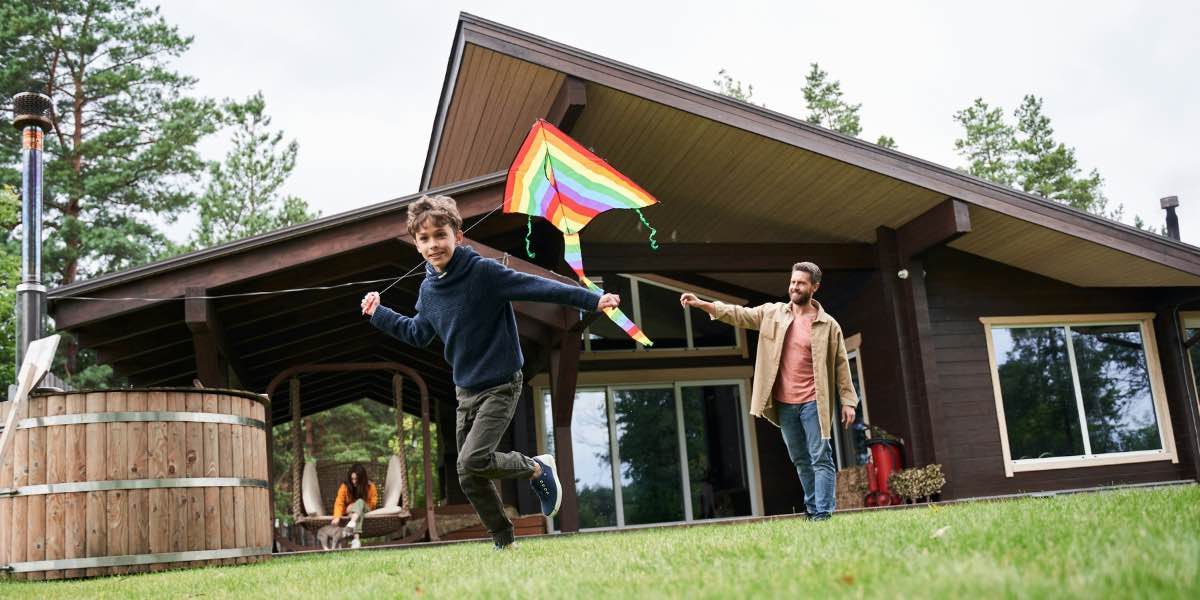Hurricane preparedness plays a growing role in shaping home design, particularly in coastal and storm-prone regions where extreme weather events occur with some frequency. This influence can be seen in the materials used, the structural choices made, and the broader planning strategies applied to both new builds and retrofits. While not all homes in hurricane-risk areas incorporate the same level of storm-resistance, design approaches increasingly reflect an awareness of environmental risks and the desire to limit potential damage where feasible.
Read also: How the U.S. Is Tackling Climate Change and Sustainability
How Structural Design Adjusts to Wind and Impact Risk
High winds are one of the most consistent threats during hurricanes, and home design in vulnerable regions often reflects this reality. Structural adaptations aim to reduce the risk of wind-related failure by reinforcing the connection between major building components. Roofs, walls, and foundations are tied together using specific techniques and hardware that help the building respond more effectively to lateral forces.
Certain roof shapes—such as those that slope on all sides—are commonly used in areas exposed to hurricanes, as they tend to offer less resistance to wind. Roof decks may be secured with specialized adhesives or fasteners that exceed minimum code requirements. Additional attention is often paid to eaves, overhangs, and gables, which can be points of vulnerability during extreme weather.
Impact-resistant windows and doors are another feature commonly integrated into storm-conscious design. These elements are often rated to withstand flying debris and sudden pressure changes, which can occur when wind penetrates the building envelope. In some areas, code mandates or insurance incentives have encouraged the adoption of these components in both new construction and renovations.
How Elevation and Water Management Are Incorporated into Design
In coastal zones or areas prone to flooding, elevation strategies play a significant role in shaping the form and layout of residential structures. Homes may be raised above base flood elevation using piers, pilings, or reinforced foundations to reduce the likelihood of water entering living areas during storm surge or heavy rainfall.
This type of elevation is often determined by floodplain mapping and local regulations, which may vary based on historical data and projected sea-level changes. Raised homes may also be required to include venting or breakaway walls at ground level, allowing water to flow through without placing excessive pressure on the structure itself.
In addition to elevating the building, home designs often include site-specific water management features. Grading may be used to redirect runoff, while drainage swales, permeable surfaces, and stormwater retention systems aim to reduce surface pooling. Where appropriate, landscaping is designed with water flow in mind, using materials and plantings that can tolerate or absorb excess moisture without sustaining long-term damage.
How Building Materials Contribute to Storm Resilience
Materials selected for hurricane-prone homes are typically evaluated for durability, moisture resistance, and performance under impact or wind pressure. Exterior cladding, roofing systems, fasteners, and window assemblies may all be specified to meet higher-than-standard thresholds in these conditions.
Some homes incorporate reinforced concrete or masonry for exterior walls, which can offer greater resistance to wind and debris than conventional framing methods. Others use treated engineered wood products or fiber cement board to achieve a balance between cost, performance, and availability. The choice of materials often depends on climate conditions, budget, and local code requirements.
Moisture-resistant underlayment and sealants are also increasingly used in roofing and wall systems. These layers serve as a secondary defense if the outer shell is compromised. Proper installation is critical, as even high-performance materials can underperform if not applied or maintained according to specifications.
How Codes and Regulations Influence Design Standards
In many areas affected by hurricanes, building codes have been updated in recent decades to reflect lessons learned from past storm events. These codes typically specify design loads for wind, water, and debris impact, as well as the types of materials and construction methods considered appropriate for specific exposure zones.
Compliance with updated building codes can significantly influence the shape and structure of a home. Wind load requirements may affect the spacing of studs and rafters, while flood zone designations can influence foundation height and utility placement. In some jurisdictions, coastal construction manuals are used in tandem with local codes to guide site planning and detailing practices.
Even in areas where compliance is not strictly enforced, builders and homeowners may voluntarily adopt storm-resilient features due to lender or insurer requirements, particularly if the property is located in a high-risk area. The presence of such features may also be viewed as a selling point in competitive housing markets, especially among buyers concerned about long-term climate risks.
How Interior Layouts and Utilities Reflect Preparedness Concerns
Inside the home, design elements can also reflect an awareness of hurricane risk. Mechanical and electrical systems may be positioned above predicted flood levels, whether on elevated platforms or upper floors. In some cases, back-up power systems, such as generators or battery storage units, are integrated into the design to support essential systems if grid power is interrupted.
Storage areas for emergency supplies, non-perishable food, and battery-powered lighting are often included in garages, closets, or utility rooms. In multi-story homes, some residents prefer to have bedrooms located on upper levels if flooding is a concern, while others may favor single-story designs that are easier to evacuate quickly if necessary.
Interior finishes may also be selected for durability. Flooring that resists warping, wall treatments that are easy to clean or repair, and cabinetry designed to handle humidity are all considerations that may influence interior design in storm-exposed homes.
How Homeowners and Builders Balance Resilience with Livability
While many storm-resistant features are designed to be unobtrusive, balancing durability with comfort and aesthetic preferences remains a common challenge. In hurricane-prone regions, residents often seek homes that not only offer greater resilience but also align with architectural traditions and lifestyle needs.
Designers may address this by incorporating features that serve dual purposes—such as operable storm shutters that also provide shade, or reinforced porches that double as social spaces. Materials and finishes are often selected to blend performance with appearance, supporting both long-term maintenance and daily comfort.
In neighborhoods where new development must meet storm resilience requirements, architectural diversity is sometimes used to avoid a uniform appearance while maintaining compliance. Builders may vary rooflines, window proportions, or facade treatments while adhering to the same underlying structural principles.
What Limitations and Considerations Come with Hurricane-Resilient Design?
Despite its potential benefits, hurricane-resilient design can involve trade-offs. The initial cost of storm-rated materials or structural upgrades may be higher than standard alternatives. In some cases, permitting or inspection processes may take longer due to stricter compliance requirements.
Not all storm-resilient strategies are appropriate for every location. Elevating a home may reduce flood risk, but it can introduce accessibility challenges or conflict with local streetscape norms. Similarly, reinforced materials may improve durability but limit flexibility in remodeling or expansion.
Maintenance remains an ongoing need. Even the most resilient homes require periodic inspection of key systems—such as roof fasteners, seals, and drainage components—to ensure they remain functional when needed. In areas where hurricanes are less frequent, homeowners may be less inclined to prioritize this upkeep, which can reduce the long-term effectiveness of protective features.
Read also: How U.S. Geography Shapes Its Culture and Economy
How Preparedness Continues to Shape Housing in Storm-Prone Regions
As weather patterns shift and awareness of storm risk increases, hurricane preparedness is likely to remain a factor in home design decisions, particularly in coastal zones. The adoption of resilient design features may expand over time, influenced by changes in regulation, material innovation, and homeowner demand.
In many communities, the goal is not to eliminate all risk but to reduce exposure where possible, enabling homes to remain habitable or recover more quickly after a storm. Through thoughtful planning and incremental adaptation, residential design continues to respond to the practical challenges posed by extreme weather while supporting comfort, safety, and longevity.







